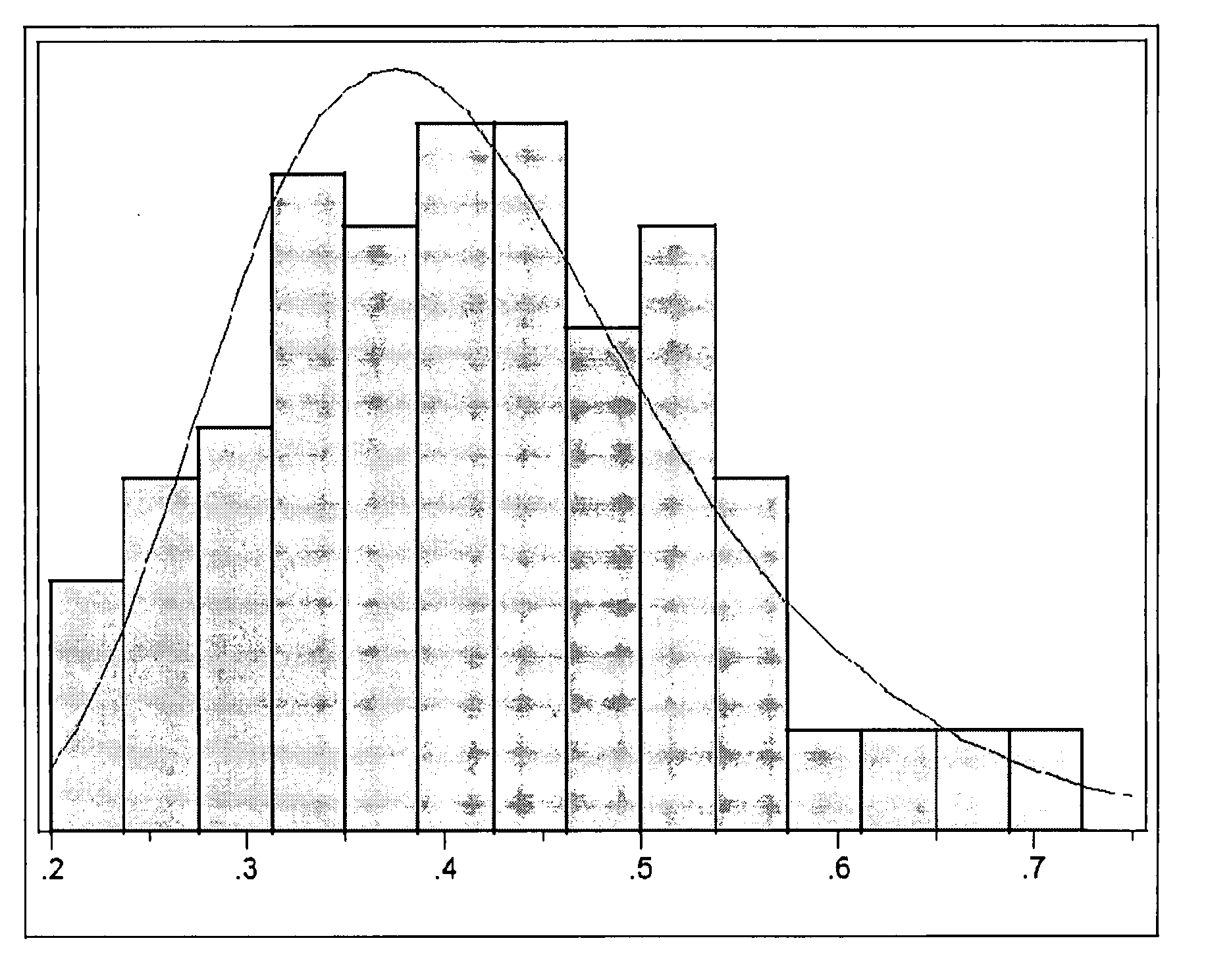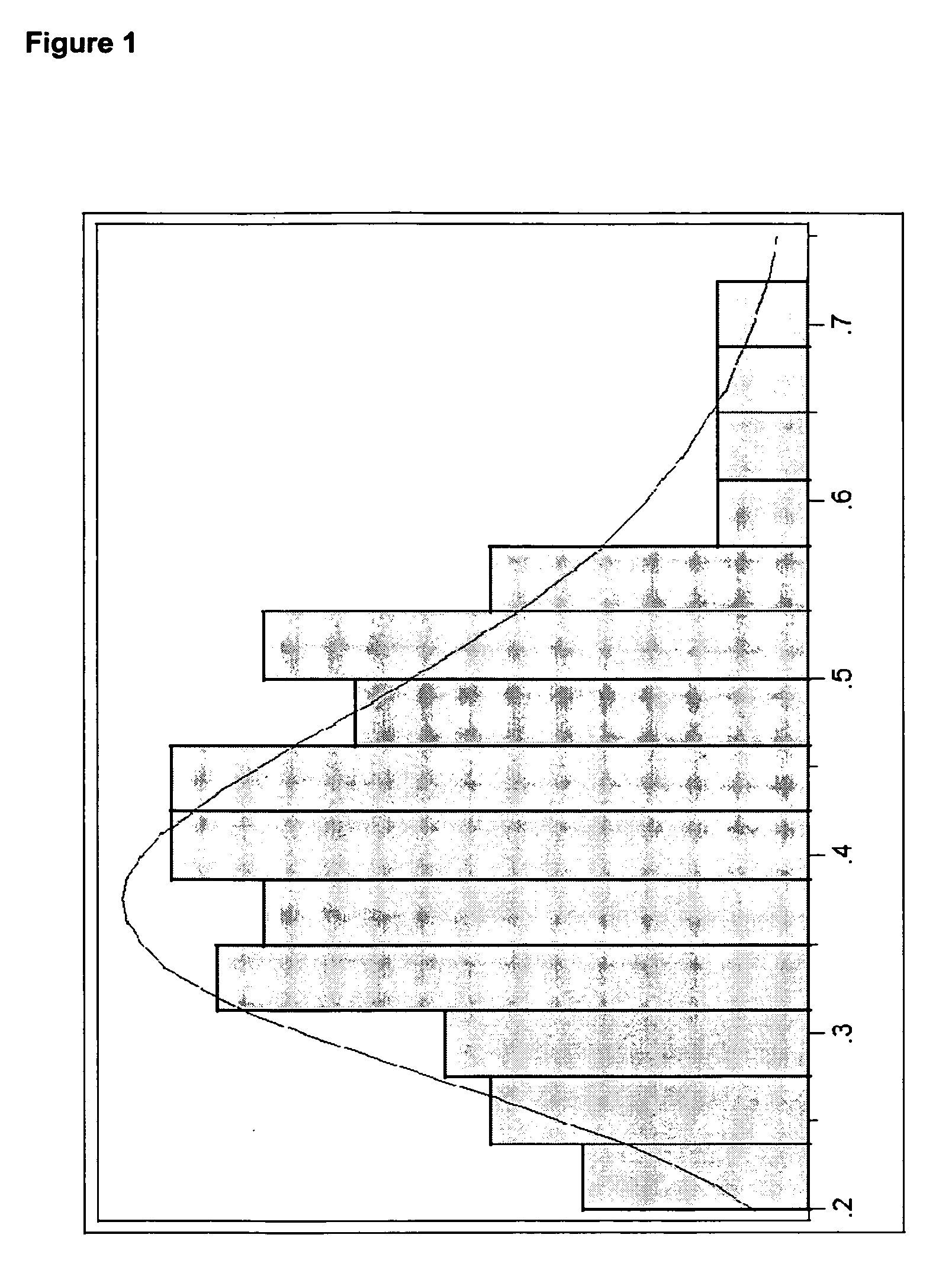Polyester polymer and copolymer compositions containing metallic tungsten particles
a technology of metallic tungsten particles and polymer polymers, which is applied in the field of polymer compositions, can solve the problems of poor adsorption of polymers, especially pet, in the region, and material having a negative effect on the visual appearance of pet containers, and achieve the effect of improving the reheating properties of compositions
- Summary
- Abstract
- Description
- Claims
- Application Information
AI Technical Summary
Benefits of technology
Problems solved by technology
Method used
Image
Examples
example 1
[0138] In this example, metallic tungsten particles were purchased from Alfa Aesar (Stock number 44210) having a stated particle size of less than 1 μm. The particles were found to have a d50 of 0.42 μm, with a particle size range from about 0.20 μm to about 0.72 μm, as measured by scanning electron microscopy.
[0139] The metallic tungsten particles were added during melt compounding to a commercial PET resin, VORIDIAN™ 9921 Polymer (a copolymer PET that has been crystallized and has an It.V. of 0.8 dL / g, available from Eastman Chemical Company, Kingsport, Tenn.). A concentrate containing 479.9 ppm tungsten was prepared using VORIDIAN 9921 Polymer as the base resin. The extrusions were performed using a one-inch single-screw extruder with Saxton and Pineapple mixing head. The extruder was also equipped with pelletization capability. The concentrates were then let down into 9921 Polymer at different concentrations ranging from 5 ppm to 479.9 ppm. During the compounding process, 9921 ...
example 2
[0150] In this example, the concentrate of 9921 Polymer containing 479.9 ppm tungsten particles as described in Example 1 was used to prepare preforms and bottles. The concentrate was combined with Voridian™ CM01 Polymer, which is a PET copolymer containing no reheat additive, to give final tungsten concentrations of 62 ppm and 100 ppm. Standard twenty-ounce bottle preforms were prepared used a BOY (22D) injection molding machine operated under a melt temperature of 280° C. and cycle time of 30 s.
[0151] Two sets of blow molding experiments were performed using the Sidel SB02 / 3 blow molding unit so as to check the reheat of each composition. The first set of experiments was conducted in order to evaluate the reheat rates, or preform surface temperature (PST), of the preforms containing tungsten particles. A series of five preforms was passed in front of the quartz infrared heaters and the PST of each composition was measured. The higher the PST value, the higher the reheat rate (or ...
example 3
[0157] Tungsten particles as described in Example 1 were added to a PET polymerization process in order to determine their effect on reheat rate and color. Polymers were prepared in the following manner.
[0158] In the first step, a PET oligomer was prepared by charging purified terephthalic acid (PTA), purified isophthalic acid (PIA), ethylene glycol (EG), and antimony trioxide (ATO) catalyst to a 2-L autoclave. The formulation was as follows: 651.0 g PTA, 13.0 g PIA, 396.0 g EG and 0.249 g ATO. The raw materials were reacted at 245° C. and 40 psig for 200 minutes. At the end of the reaction, the resulting oligomer was discharged from the reactor and allowed to solidify at room temperature and was then pulverized to a coarse powder.
[0159] In the second step, a polymer was prepared from the oligomer in the following manner. Oligomer (121 g) was charged to a 500 mL polymerization flask equipped with a polymer head, an overhead stirrer, a nitrogen inlet, a dry-ice condensing trap, and...
PUM
| Property | Measurement | Unit |
|---|---|---|
| Length | aaaaa | aaaaa |
| Length | aaaaa | aaaaa |
| Length | aaaaa | aaaaa |
Abstract
Description
Claims
Application Information
 Login to View More
Login to View More - R&D
- Intellectual Property
- Life Sciences
- Materials
- Tech Scout
- Unparalleled Data Quality
- Higher Quality Content
- 60% Fewer Hallucinations
Browse by: Latest US Patents, China's latest patents, Technical Efficacy Thesaurus, Application Domain, Technology Topic, Popular Technical Reports.
© 2025 PatSnap. All rights reserved.Legal|Privacy policy|Modern Slavery Act Transparency Statement|Sitemap|About US| Contact US: help@patsnap.com



